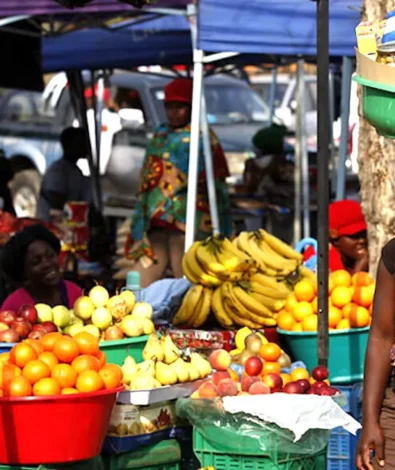NBS says 85.6% of working-class Nigerians are self-employed

The National Bureau of Statistics (NBS) has disclosed that 85.6% of Nigeria’s working-class population is self-employed, signifying the dominant role of self-employment in the nation’s labor market.
This finding was highlighted in the NBS’ latest Q2 2024 Labor Force Survey, which further reveals shifts in employment patterns driven by economic and structural factors.
In its breakdown, the report divides employment into two main categories: employees and self-employed individuals.
Employees are those earning wages or salaries, including paid apprentices, while self-employed individuals, also referred to as own-account workers, operate businesses independently or with partners.
What the data says
- The proportion of self-employed individuals saw a slight increase from Q1 2024’s 84%, despite falling from 88% recorded in Q2 2023.
- A gender-disaggregated analysis emphasizes that while self-employment remains more prevalent among women, men dominate wage-based employment. Females recorded a higher self-employment rate of 88.3%, compared to 82.2% among males. Women are also more likely to engage in informal employment, often facing limited access to formal job opportunities.
- Regionally, rural areas exhibited significantly higher rates of self-employment at 94.3%, contrasting with 79.7% in urban centers, showcasing disparities in employment structures between urban and rural communities. The NBS attributed the high rural self-employment figures to the dominance of agriculture and trade-related activities in these areas.
Informal employment remains the dominant
The NBS report shows that informal employment continues to dominate Nigeria’s labor market, with 93% of total employment recorded in Q2 2024.
- This represents a slight increase from 92.7% in Q1 2024, highlighting the persistent reliance on informal work for livelihood across the country.
- The data highlights that informality remains significantly high, particularly among individuals with lower levels of education. Workers with no formal education are overwhelmingly engaged in informal employment, accounting for 99% of total employment.
- By contrast, those with post-secondary education are far less likely to work informally, with only 26.6% of them engaged in this sector.
- When agriculture is excluded, the trend persists, with the proportion of informal employment decreasing to 14.7% for those with post-secondary education but remaining as high as 98.4% for those without formal education.
Gender disparities are also evident, with women more likely to be employed informally compared to men. Rural areas show even higher informality rates, where 97.5% of workers are employed informally, compared to 90% in urban areas.
This rural-urban divide emphasizes the role of agriculture and small-scale enterprises in driving rural employment, as well as the limited access to formal job opportunities in these regions.
What you should know
- Across other labor indicators, the employment-to-population ratio increased to 76.1% in Q2 2024 from 73.2% in Q1 2024, reflecting a more engaged workforce. The labor force participation rate also rose slightly to 79.5% in Q2 2024, marking steady recovery from fluctuations in previous quarters. This trend is an indication of increased economic activity, particularly in informal and self-employment sectors.
- Nairametrics earlier reported that the unemployment rate in Nigeria decreased to 4.3% in the second quarter of 2024, reflecting a 1 percentage point drop from the 5.3% recorded in Q1 2024. However, on a year-on-year basis, the rate increased slightly by 0.1 percentage points compared to the same period in 2023.
- The high prevalence of self-employment and informality not only impacts job security but also restricts access to social protections such as pensions, healthcare, and unemployment benefits. As Nigeria continues to grapple with economic challenges, ensuring better support for informal workers while creating pathways toward formal employment will be vital for sustainable economic growth and social development.



